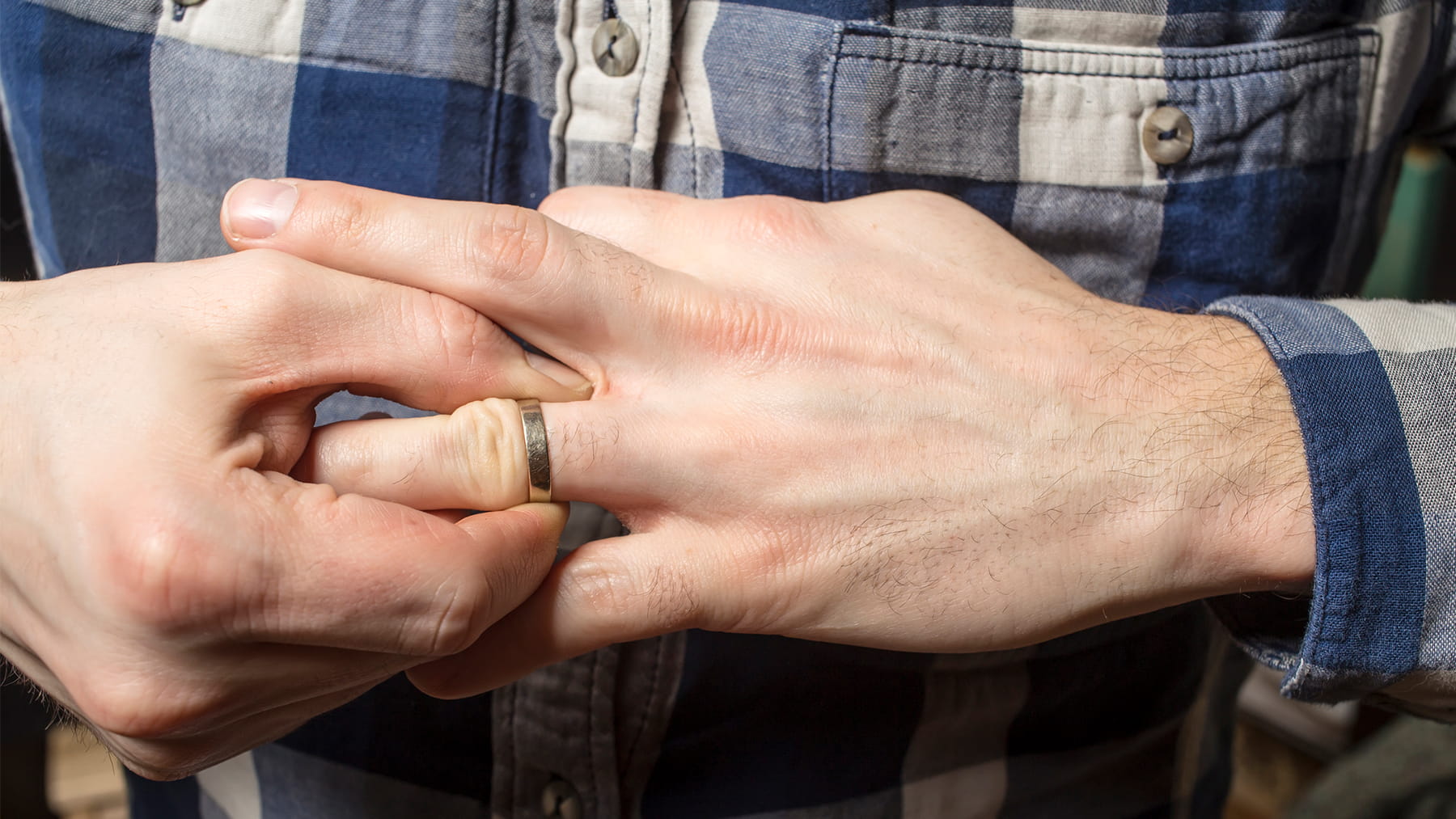Avoid a painful wedding ring injury with these 4 tips

What I’m about to tell you shouldn’t be used as an excuse not to wear a wedding ring.
But that little band of metal, that symbol of your love, does pose a risk to your ring finger—especially if you’re working with heavy machinery. I’ll spare you the gory details but, as a hand and upper extremity orthopedic surgeon, I’ve seen some disastrous consequences when rings get caught, ranging from painful thermal burns to traumatic injuries that end in amputation.
Freak accidents happen too. You may recall that comedian Jimmy Fallon suffered what’s called ring avulsion—where the skin, nerves, tendons and even bone of the finger is pulled and torn by the ring—after he merely tripped on a rug in his kitchen and caught himself on a counter.
These injuries are often complex, and repairing them is difficult, often requiring hours of microsurgery and long recovery times with months and months of therapy trying to get function back to the finger if it’s salvaged.
That said, you can take some comfort in knowing that these kinds of injuries aren’t common, and that you can take steps to prevent them.
Here are some easy ways to preserve your love and your digit:
- Remove your ring when your finger may be at risk. This should apply to laborers working with machinery as well as folks working out at the gym. Basketball players may be especially susceptible to ring avulsion, as rings may become caught on the hoop or netting. Also, make sure to store your ring in a safe spot you’ll remember. Otherwise…
- Wear your ring around your neck. Many people in the surgical profession, for example, wear their rings on necklaces—a practice that comes with the added bonus of not misplacing your removed ring (which has happened to me several times).
- Consider a silicone, or breakaway, ring. I don’t have much experience with these rings, but if they perform as advertised, they’re designed to stretch and snap under pressure, breaking away from your finger before causing any damage.
- Don’t wear rings that are too tight. Your ring should never be so tight that it can’t come off comfortably. We sometimes see patients who haven’t removed rings in decades, and they’re so tightly bound to the finger that we have no choice but to cut the ring off. This puts your finger at greater risk in case of an accident, because the ring has no way to slide off easily.
As I said earlier, these injuries aren’t common, and you can’t prepare for everything. Fluke injuries sometimes happen. But being mindful of scenarios that increase your risk of ring finger injury can help you prevent a lot of pain and time in surgery.
Hisham Awan is the director of the hand and upper extremity center at The Ohio State University Wexner Medical Center and specializes in surgeries of the hand, wrist, elbow and shoulder. He’s also an associate professor in the Ohio State College of Medicine.

